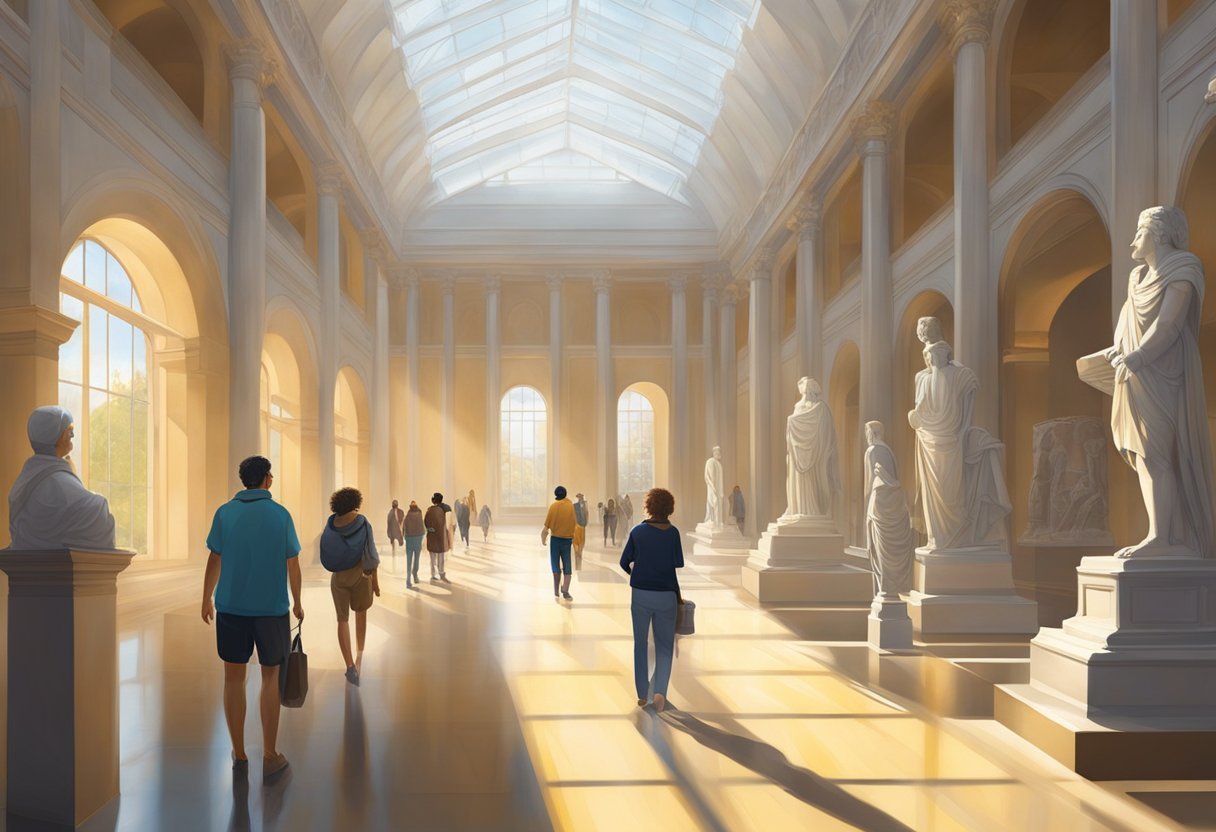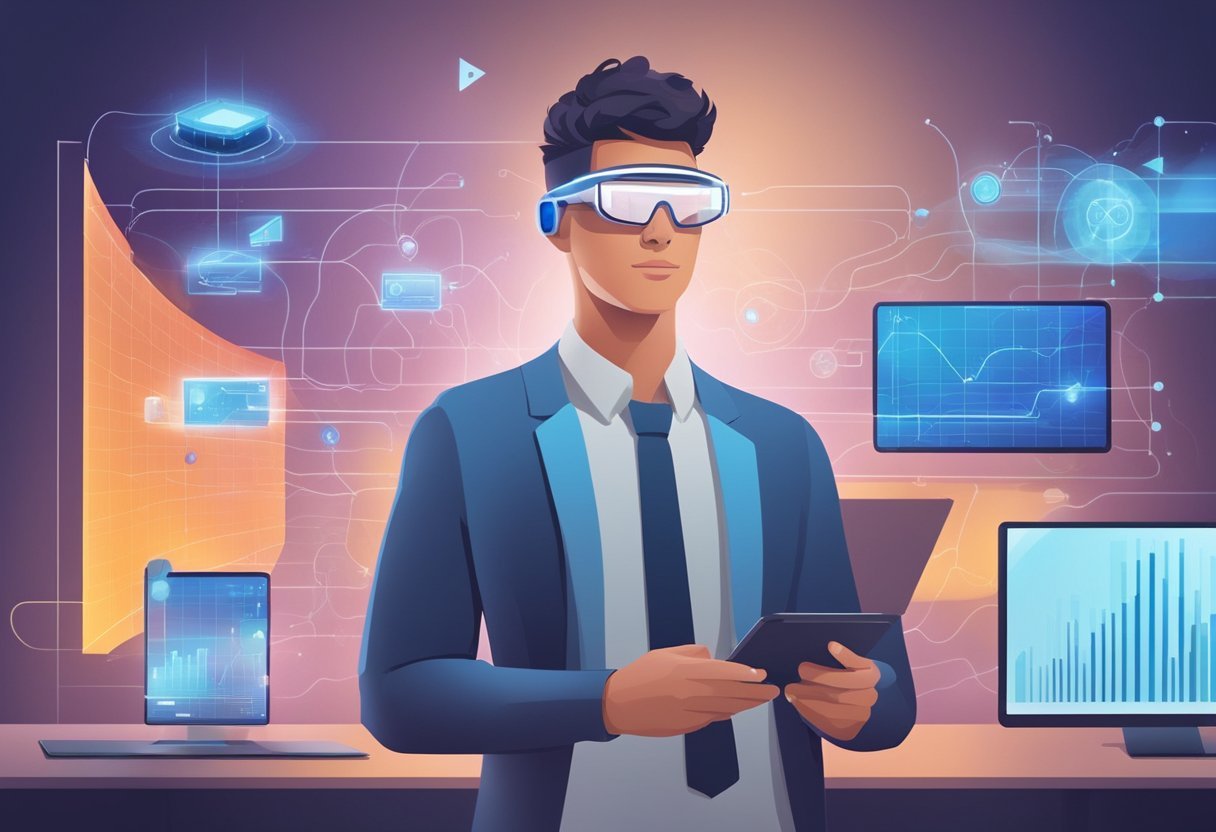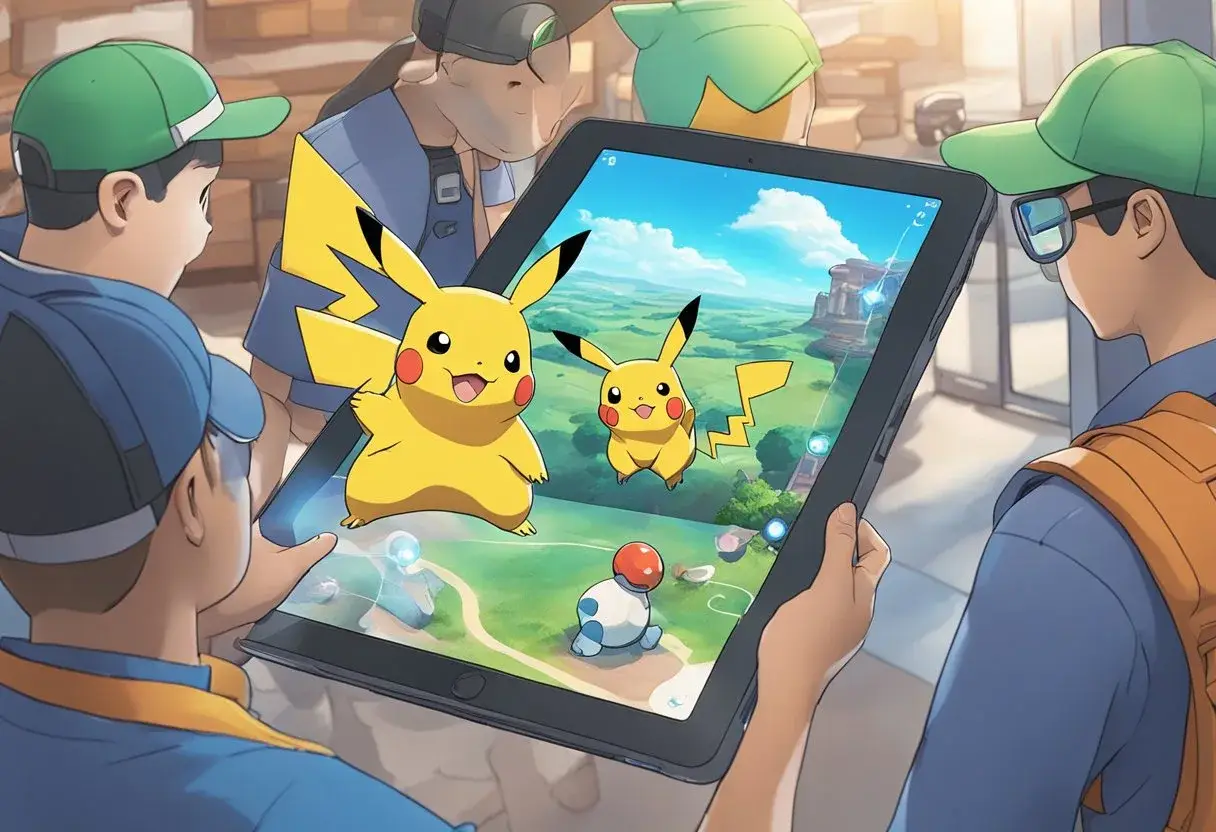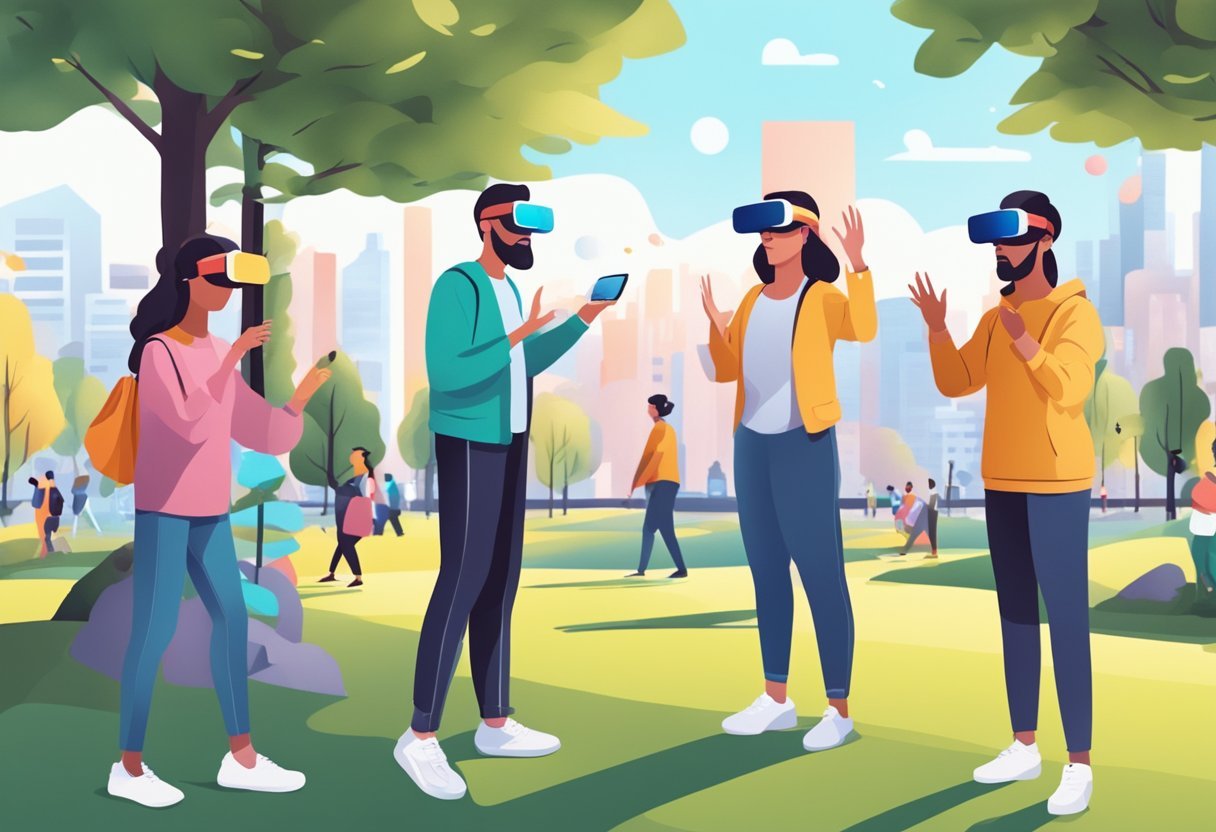Augmented Reality (AR) has become a popular technology that is transforming the way we experience art museums, galleries, and exhibitions. AR has the ability to create a new level of engagement and interaction for visitors, providing them with a more immersive and educational experience. With AR, visitors can see digital overlays of artists, 3D animations, and explanations of artworks.
AR is being used in art museums all over the world to enhance the visitor experience. One example is the Art Gallery of Ontario (AGO) in Toronto, which created an AR installation called ReBlink. The installation allows visitors to see digital overlays of the artworks, providing them with a new perspective on the pieces. Another example is the Museum of Modern Art in New York, which has used AR to create a virtual siege of the Jackson Pollock gallery on the museum’s fifth floor.
What is an AR Museum
An AR museum is a type of museum that uses augmented reality technology to enhance the visitor experience. AR technology overlays digital content onto the real world, allowing visitors to interact with exhibits in new and exciting ways.
How AR Museums Work
AR museums typically use mobile devices, such as smartphones or tablets, to deliver the augmented reality experience. Visitors download an app or access a website that provides information and digital content related to the exhibits. As visitors move through the museum, the app or website uses the device’s camera to recognize and track the exhibits, overlaying digital content onto the real-world objects.
Role of AR in Museums
AR technology has the potential to revolutionize the museum experience, making exhibits more engaging, interactive, and educational. AR can bring exhibits to life, providing visitors with a deeper understanding of the world and culture around them. AR can help museums reach new audiences, including younger generations who may be more comfortable with technology.
Augmented Reality Museum Tour
One of the most exciting applications of AR technology in museums is the augmented reality museum tour. AR tours use the same technology as AR exhibits, but instead of focusing on individual exhibits, they provide a guided tour of the entire museum. AR tours can be customized to the interests and needs of individual visitors, providing a personalized and immersive experience.
The history and evolution of art museums have led to the development of AR museums, which use technology to enhance the visitor experience. AR technology has the potential to revolutionize the museum experience, making exhibits more engaging, interactive, and educational. Augmented reality museum tours are an exciting application of this technology, providing visitors with a personalized and immersive experience.
10 AR museums and their locations
- The Louvre Museum – Paris, France
- The British Museum – London, England
- Smithsonian Institution – Washington, D.C., USA
- American Museum of Natural History – New York City, USA
- ArtLens Exhibition at the Cleveland Museum of Art – Cleveland, USA
- The Pérez Art Museum Miami (PAMM) – Miami, USA
- The Dalí Museum – St. Petersburg, USA
- The Detroit Institute of Arts – Detroit, USA
- The Getty Museum – Los Angeles, USA
- National Museum of Singapore – Singapore
Benefits of AR Museums
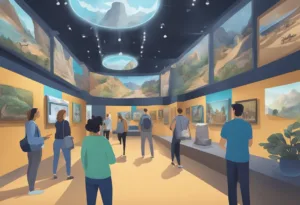
Augmented Reality (AR) technology has revolutionized the way museums operate and engage with their visitors. Here are five benefits of AR museums:
1. Enhanced visitor experience
AR technology can create immersive and interactive experiences that engage visitors and bring exhibits to life. Visitors can use their smartphones or tablets to access additional information, 3D animations, and digital overlays that enhance the exhibits’ educational value. AR-powered self-guided tours provide visitors with a personalized experience and allow them to explore the museum at their own pace.
2. Improved accessibility and inclusivity
AR technology can improve accessibility and inclusivity for hearing-impaired visitors. AR technology can provide captions, sign language, and audio descriptions that enhance the visitor’s experience. Visitors with mobility issues can also benefit from AR technology by accessing exhibits without having to move around the museum physically.
3. Streamlined operational processes
AR technology can streamline operational processes by automating tasks such as data collection, exhibit maintenance, and security protocols. AR technology can also reduce the need for physical signage and guides, which can save museums time and money.
4. Increased engagement and education
AR technology can increase engagement and education by providing visitors with interactive and immersive experiences. AR technology can also provide visitors with access to additional information, historical context, and multimedia content that enhance the educational value of the exhibits.
5. Attract wider audiences
AR technology can attract wider audiences by creating unique and innovative experiences that appeal to different age groups and interests. AR technology can also make museums more accessible to people who live far away or cannot visit in person.
Limitations of AR Museums
AR technology in museums has its limitations that can affect the visitor’s experience. Here are five limitations that you should be aware of:
1. Limited Accessibility
AR technology requires specific devices and software to function correctly. Visitors who don’t have these devices or software might not be able to use AR technology in museums. Not all visitors are familiar with the technology, which can create barriers to access and limit the overall audience.
2. Technical Issues
AR technology is still relatively new, and it’s not uncommon for technical issues to arise. Technical problems can cause frustration and negatively impact the visitor’s experience. Moreover, the software used for AR technology can be expensive, and it may not be feasible for all museums to invest in such technology.
3. Limited Interaction
AR technology is still not advanced enough to allow visitors to interact with the exhibits in the same way that they would in a physical museum. While AR technology can provide additional information and context, it cannot replace the physical experience of interacting with an exhibit.
4. Limited Immersion
AR technology can create an immersive experience, but it’s still not as immersive as a physical museum. Visitors can’t touch or smell the exhibits, which limits the overall experience.
5. Distractions
AR technology can be distracting, and it can take away from the visitor’s experience of the exhibit. Visitors may become too focused on the technology and miss out on the physical experience of the exhibit.
In conclusion, while AR technology in museums can enhance the visitor’s experience, it has its limitations. Museums need to consider these limitations when deciding whether to invest in AR technology and how to incorporate it into their exhibits.
User Experience in AR in Museum
AR technology is revolutionizing the way we experience museums. Here are five ways AR can enhance your user experience:
1. Immersive Experience
AR technology creates an immersive experience for visitors. It allows them to interact with exhibits in a new way and explore the museum in a more engaging way. AR brings exhibits to life by adding a layer of interactivity and animation.
2. Personalized Experience
AR technology can personalize the museum experience for visitors. It can provide personalized information about exhibits based on the visitor’s interests and preferences. This creates a more tailored experience that is unique to each visitor.
3. Interactive Learning
AR technology can make learning more interactive and engaging. It can provide visitors with a hands-on learning experience that is more effective than traditional methods. AR can also provide visitors with interactive quizzes and games that test their knowledge and enhance their learning experience.
4. Accessibility
AR technology can make museums more accessible to people with disabilities. It can provide audio and visual aids that make exhibits more accessible to people with hearing or vision impairments. AR can also provide visitors with translations in different languages, making the museum more accessible to people from different cultures.
5. Time Travel
AR technology can take visitors on a journey through time. It can provide visitors with a glimpse into the past by overlaying historical images and information onto the current exhibit. This creates a unique experience that allows visitors to travel through time and learn about history in a new way.
AR Museum Apps
AR museum apps are software applications that allow users to have an interactive experience with the museum’s exhibits. These apps use augmented reality technology to create an immersive experience that enhances the visitor’s understanding of the exhibits. Here are five AR museum apps that you can use to enhance your museum experience:
1. Smithsonian National Museum of Natural History’s “Skin and Bones” App
The “Skin and Bones” app is an AR app that was introduced by the Smithsonian National Museum of Natural History. This app allows visitors to view century-old skeletons of vertebrates in the Bone Hall exhibit. The app uses AR technology to create an interactive experience that enhances the visitor’s understanding of the exhibit.
2. AR Museum
AR Museum is an augmented reality museum that is opening soon in Orlando, Florida. The museum will use AR technology to create an immersive experience for visitors. The exhibits will include sharks, fish, and dinosaurs. Visitors will be able to view these exhibits in 3D and in virtual reality.
3. Louvre Museum’s “Mona Lisa: Beyond the Glass” App
The “Mona Lisa: Beyond the Glass” app is an AR app that was introduced by the Louvre Museum. This app allows visitors to view the Mona Lisa painting in a new way. The app uses AR technology to create an interactive experience that enhances the visitor’s understanding of the painting.
4. British Museum’s “Museum of the World” App
The “Museum of the World” app is an AR app that was introduced by the British Museum. This app allows visitors to explore the museum’s exhibits in a new way. The app uses AR technology to create an interactive experience that enhances the visitor’s understanding of the exhibits.
5. ArtLens App
The ArtLens app is an AR app that was introduced by the Cleveland Museum of Art. This app allows visitors to view the museum’s exhibits in a new way. The app uses AR technology to create an interactive experience that enhances the visitor’s understanding of the exhibits. The app also includes features such as a map of the museum and information about the exhibits.
AR museum apps are a great way to enhance your museum experience. These apps use AR technology to create an immersive experience that enhances the visitor’s understanding of the exhibits. With these apps, you can explore the museum’s exhibits in a new way and gain a deeper understanding of the history and culture behind them.
AR in Museum Use Cases
Augmented Reality (AR) technology has revolutionized the way museums present their exhibitions. Here are some of the use cases of AR in museums:
1. Enhancing Visitor Experience
AR technology can be used to enhance the visitor experience by providing interactive and immersive exhibits. Visitors can use their smartphones or tablets to view additional information about an exhibit, such as historical context, multimedia, and 3D models. This can help visitors to engage more deeply with the exhibits and learn more about the history and culture behind them.
2. Preservation of Artifacts
AR technology can help museums to preserve their artifacts by creating digital replicas of them. This can be useful in cases where the original artifact is too fragile or valuable to be displayed. Digital replicas can also be used to create interactive exhibits that allow visitors to explore the artifact in more detail.
3. Education and Learning
AR technology can be used to create educational exhibits that are both fun and informative. Visitors can use AR to learn about the history and culture behind an exhibit, as well as the scientific principles that underpin it. AR can also be used to create interactive games and quizzes that test visitors’ knowledge and understanding of the exhibit.
4. Accessibility
AR technology can help to make museums more accessible to people with disabilities. For example, AR can be used to provide audio descriptions of exhibits for people with visual impairments. It can also be used to provide sign language interpretation for people with hearing impairments.
5. Marketing and Promotion
AR technology can be used to create innovative marketing and promotional campaigns for museums. For example, museums can use AR to create virtual tours of their exhibits, which can be shared on social media and other digital platforms. This can help to attract new visitors to the museum and raise awareness of its collections.
AR technology has the potential to transform the way museums present their exhibits. By enhancing the visitor experience, preserving artifacts, providing education and learning, increasing accessibility, and creating innovative marketing campaigns, AR can help museums to engage with a wider audience and promote their collections to the world.
Frequently Asked Questions
What is the use of AR in museums?
AR technology can be used in museums to provide visitors with immersive experiences and enhance the overall experience. AR can enrich everything the visitor sees, and it can be used to bring exhibits to life. It can also be used to provide visitors with additional information about the exhibits they are viewing.
Can you visit museums in VR?
Yes, you can visit museums in VR. VR technology can be used to provide visitors with a virtual tour of a museum, allowing them to explore exhibits and collections from the comfort of their own home.
Can virtual reality be used to visit museums remotely?
Yes, VR can be used to visit museums remotely. This technology can provide visitors with a virtual tour of a museum, allowing them to explore exhibits and collections from anywhere in the world.
How can AR be used in exhibitions?
AR can be used in exhibitions to provide visitors with an interactive and immersive experience. It can be used to bring exhibits to life, provide additional information about the exhibits, and create a more engaging and memorable experience for visitors.
How can museums integrate augmented reality into their exhibitions?
Museums can integrate augmented reality into their exhibitions by using AR technology to enhance the visitor experience. This can be done by creating interactive exhibits, providing additional information about exhibits, and using AR to bring exhibits to life.
How AR can be used to promote audience engagement during and after an exhibition?
AR can be used to promote audience engagement during and after an exhibition by providing visitors with a more interactive and engaging experience. This can be done by using AR to create interactive exhibits, providing additional information about exhibits, and using AR to create a more immersive and memorable experience for visitors.

